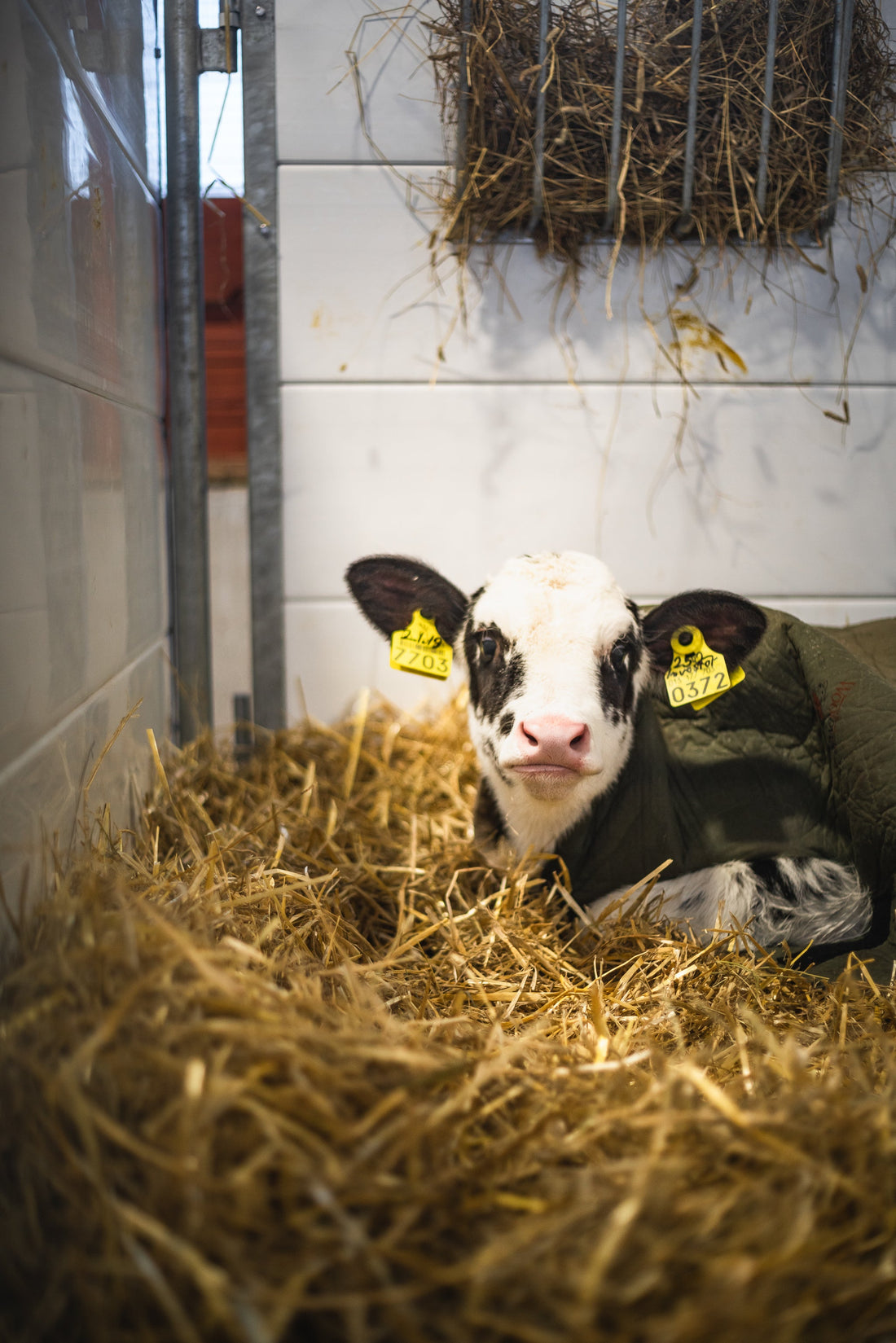Healthy and well growing young stock are one of the most important dairy farm resources. Cold breeding of calves has a long tradition, but it still creates strong feelings for and against it. Every farm expanding will eventually have to make the decision of how to raise the youngest ones. More calves mean greater infectious pressure for respiratory diseases, diarrhea and also other calf diseases.
1. An inexpensive building
By building a cold, uninsulated building for calves, you can get more square meters and start to use all-in all-out-system. When designing calf barn, calculate room for 1,4 x the average number of calves. No matter how good the management on the dairy farm has, calving surges can happen. Working in a calf barn is much more fluent when it is a little bit “oversized”.
2. Do most of the work in warm calf kitchen
Many people think that working in cold is demanding for the employees and a challenge for the calves. They are afraid that calves will freeze in wet pens and people freeze as well working every day for hours milk feeding, bedding and feeding calves. When calves are housed in a cold barn, long periods of low temperatures mean more work. The point is to be prepared and has a plan for cold periods too and in that way avoid a calf barn turning into a frozen labour camp. Taking care of the calves in uninsulated buildings is much more pleasant work if there is a warm and spacious calf kitchen in the building. That is where all the work that doesn’t involve direct contact with the calves can be done comfortably: washing milk feeding equipment, preparing the milk feed for the calves, do the bookkeeping for example.
3. Straw is the best bedding and calf jacket good added insulation
Extra bedding is needed in winter. There must be so much straw in a pen, that a calf can dig into it or nest in it. That helps a calf to keep dry and warm. Good test for sufficient bedding is the knee test: you have to be able to stay in a pen on your knees for 20 seconds without getting wet or dirty. It is easy for people working in the calf barn to succeed with bedding when group pens are bedded with a machine and the bedding material is stored within a short distance from individual pens.
It is a good idea to put a calf jacket on all newborns after the calf is dry. It is recommended to wear a calf jacket up to three weeks of age. It is recommended to put on a calf jacket at the latest when the ground is frozen. Newborns benefit from a calf jacket as soon as the outside temperature drops below 10 degrees Celsius. A calf jacket provides protection for young calves, helping them maintain their body temperature in a cold environment. A good calf jacket fits well on the calf, is washable and durable.

Calves love straw!
4. Fresh air also in winter time
Properly designed and managed ventilation minimizes the moisture and also reduces the need for bedding in a calf barn. The curtain walls are adjusted according to the weather and overpressure tube ventilation takes care of the minimum air exchanges even if the thermometer shows figures like -30 ◦C. Fresh, clean air helps to keep calves healthy because many calf diseases spread easily in moist air.
5. Feed more
Calves need extra energy in cold climates already when the temperature falls below +10◦C. That can be done by adding an extra feeding time, giving them 1/3 more milk. In addition, warm water must be given to the calves as often as practically possible and they must always have access to good quality pellets. The weaning process is always stressful and it can be postponed if weather conditions are extreme.
In all dairy farms rearing healthy and well-producing milking cows is an important goal. A well-designed calf barn that works smoothly, where calves enjoy the stress-free environment and stay healthy, is an important part of achieving this goal. 4dBarn's design emphasizes the simple principle of Lean thinking: we do not run faster in the new calf barn, but plan together how to walk on a shorter distance.
Updated February 13, 2025


